
An Off-Axis Integrated-Cavity Output Spectroscopy (OA- ICOS) green-house gas analysers (GGA) is utilised to measure CO2 and CH4 concentrations in the atmosphere; and a second OA-ICOS analyser (N2O) continuously measures N2O and CO. These analysers regulate their internal cell temperature to reduce temperature fluctuations. Preconditioning of the atmospheric samples prior to measurement is performed by dropping the sample’s temperature below the dew point to condense out the water. A coarse drier placed in line with a cryogenic trap combine to form an effective and chemical free drying technique. The trap is filled with glass beads to maximise the surface area the source air has to travel, hastening the extraction process.
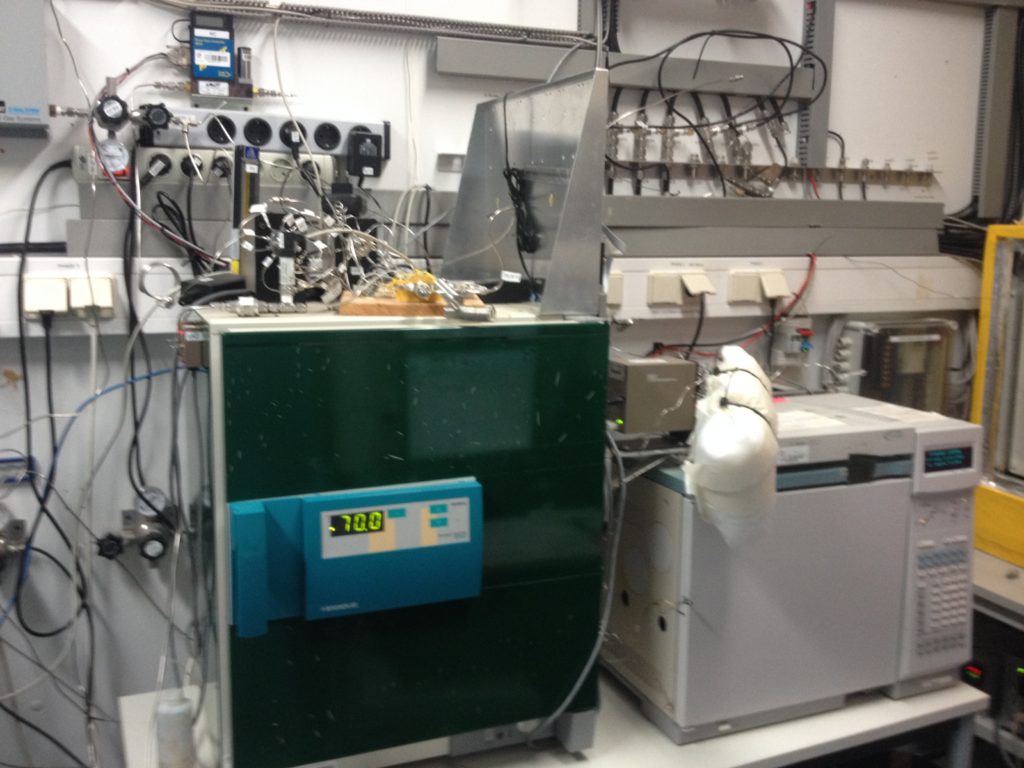
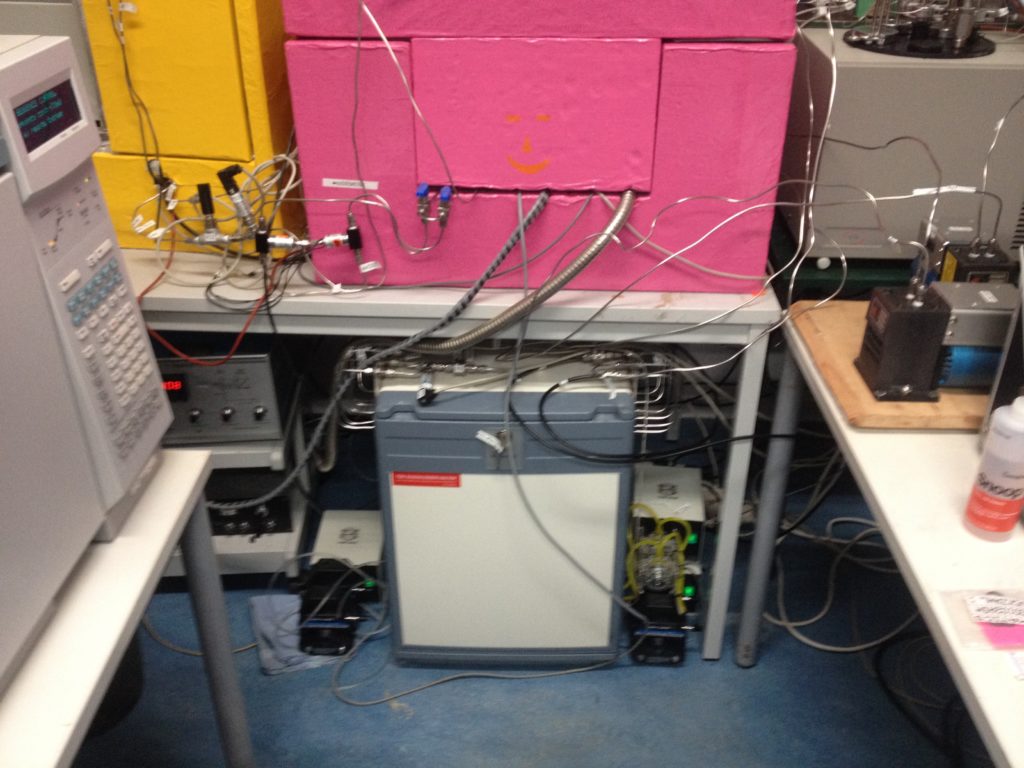
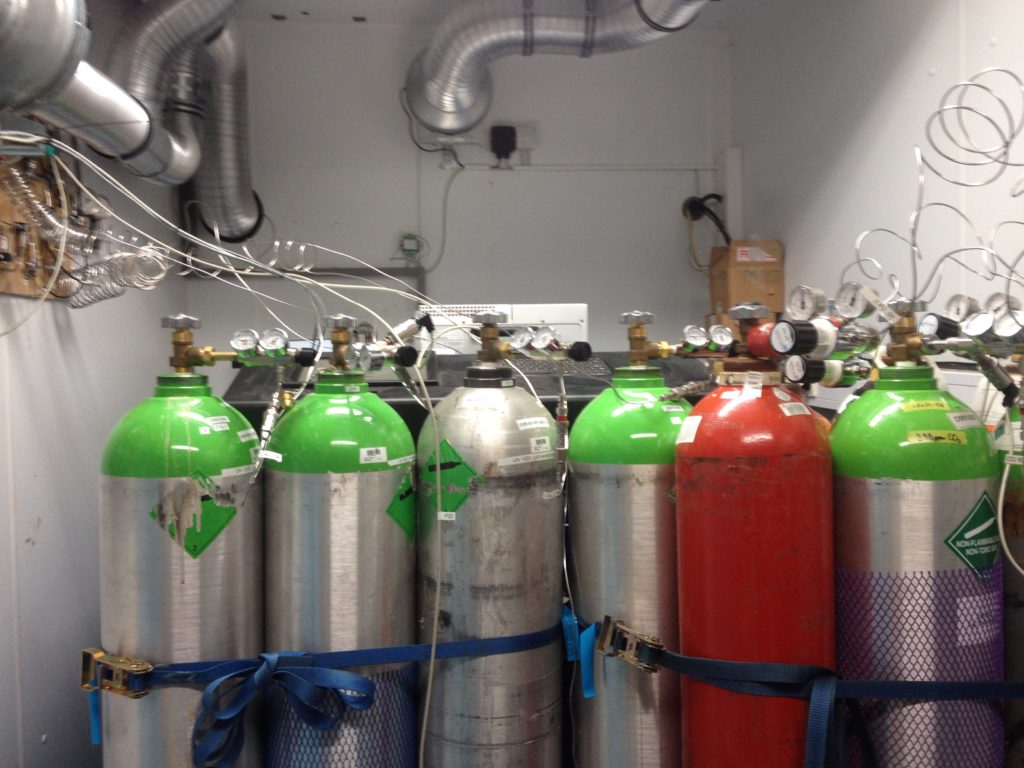
Each analyser has the capability to detect and factor water vapour concentration at precisions of 150 ppm and 50 ppm ( GGA and N2O respectively) at a frequency of 1Hz. However, drying of the source air prior to observation removes this requirement. Consequently, any internally computed dry values are discarded prior to our analysis.
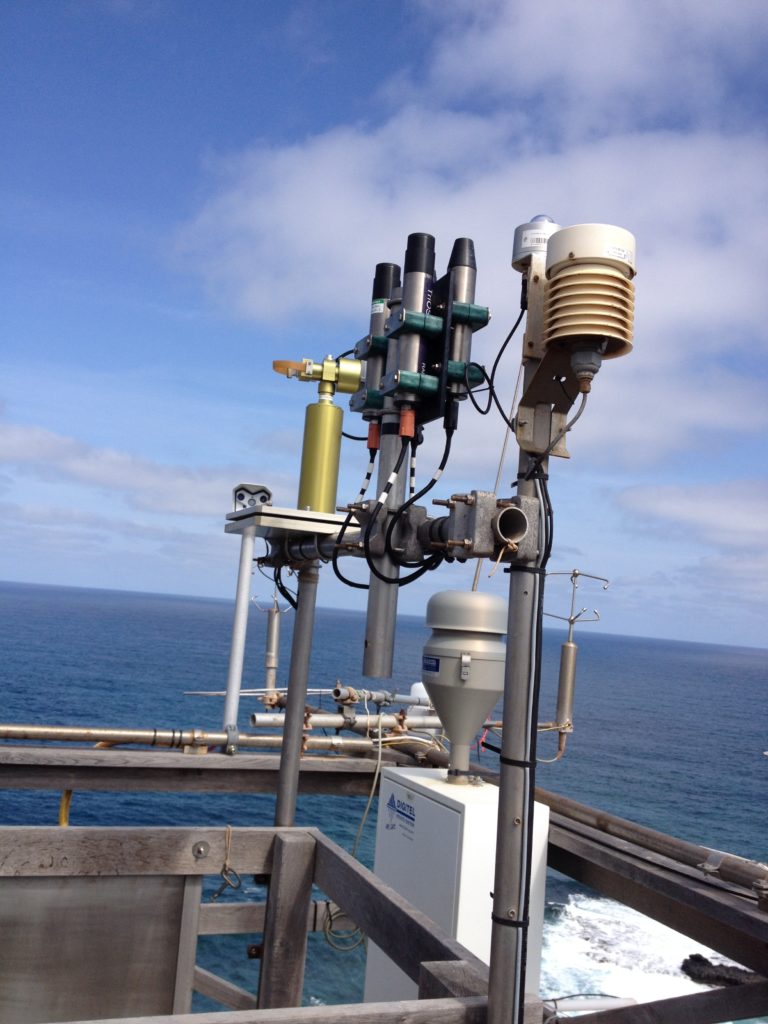

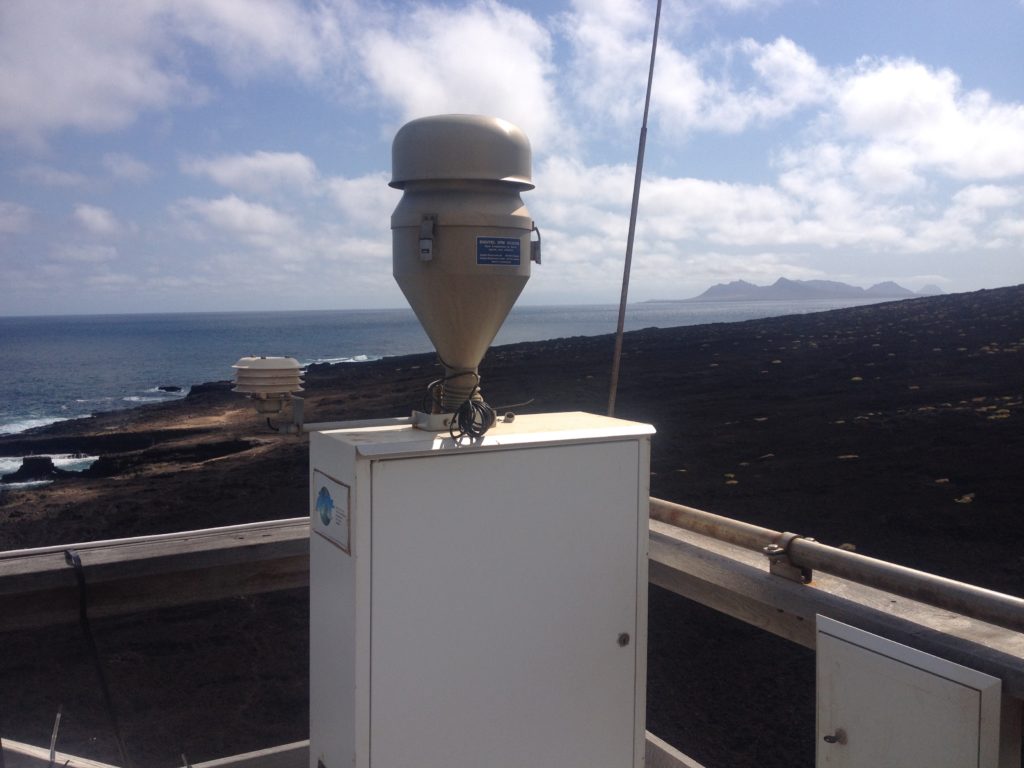
Imperfections, such as the previously mentioned temperature variation, ambient air and cell pressure fluctuations and water concentration inclusions are removed by the utilisation of a working tank in the system. The constant reference derived from the tank forms an essential part of the infrastructure delimiting both observational and calibration-based samples; thus, allowing for post-measurement drift compensation. To accomplish this, a linear interpolation, formed from taking the mean of the relevant working tank measurement, is computed between each of the delimiting working tanks and subtracted from the sample dataset to produce a baseline.
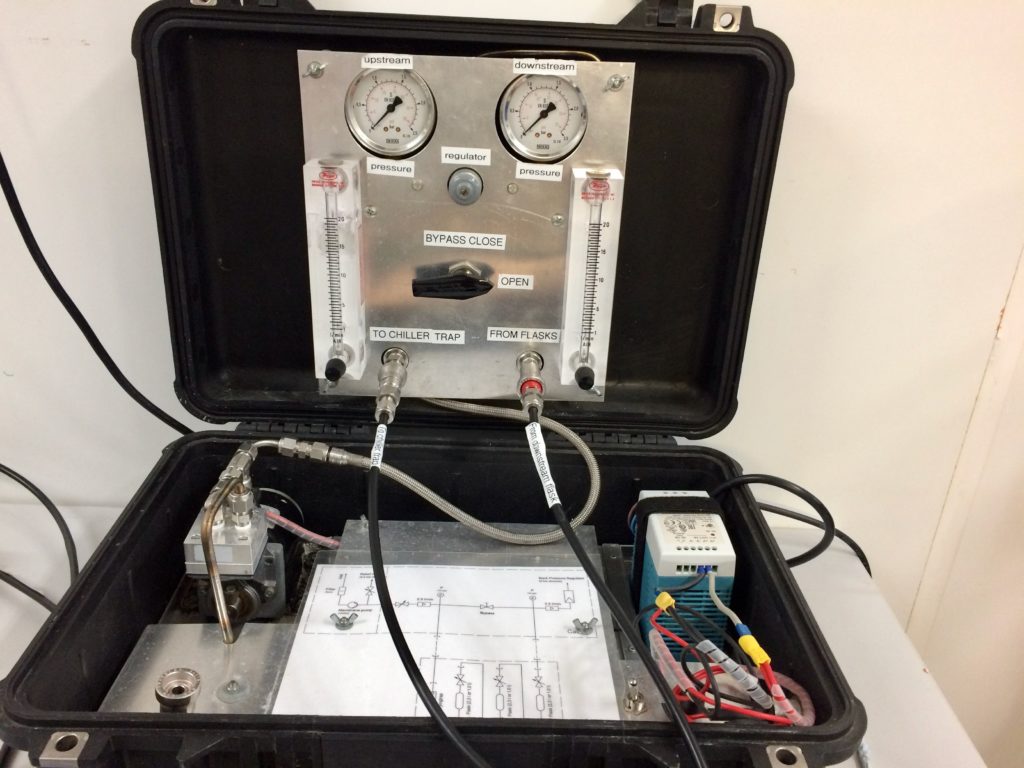
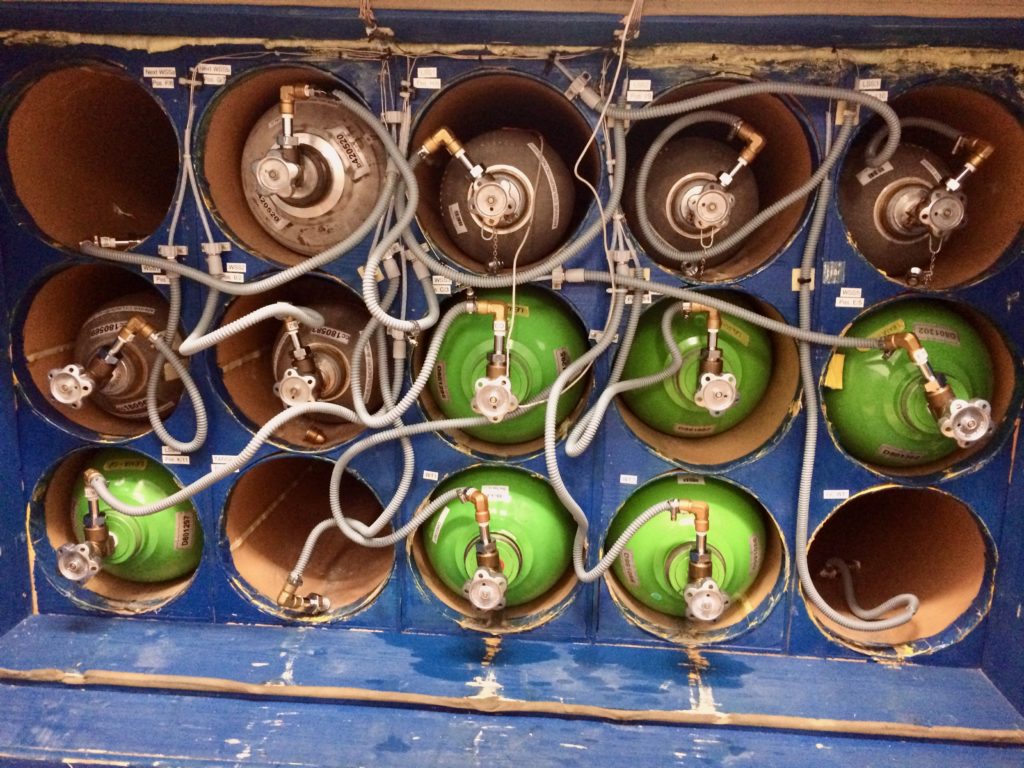
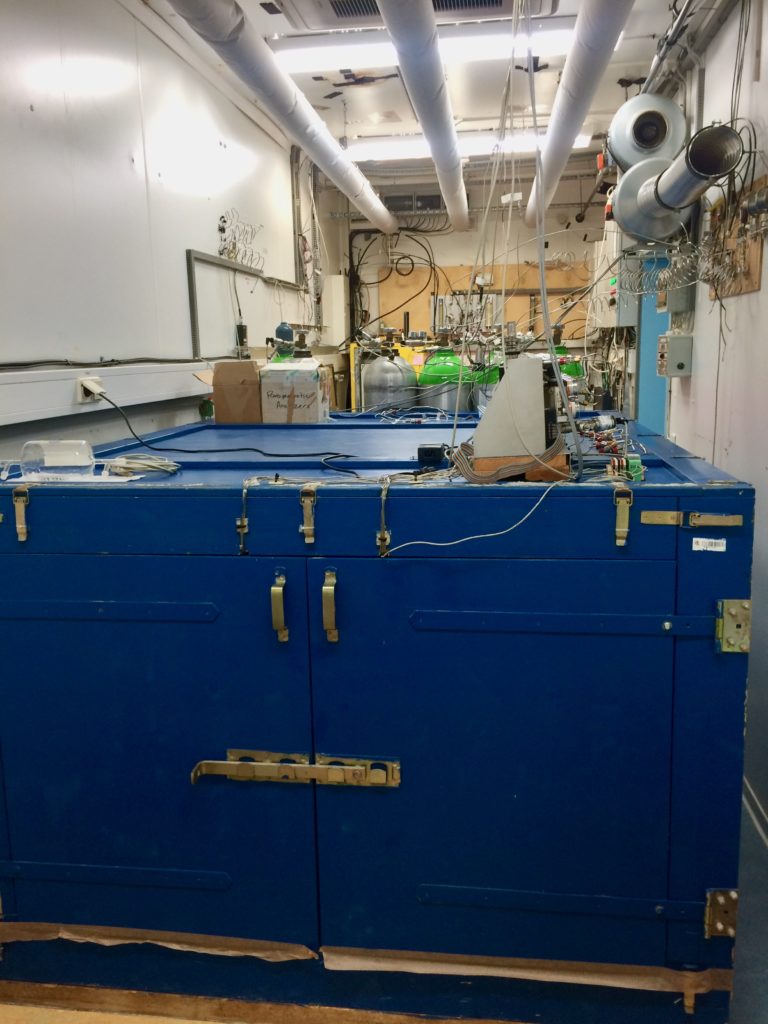
Furthermore, Allan deviation was employed to determine an efficient noise filter to remove inherent systematic errors. The optimal averaging period for the filter was deemed to be 120 seconds [Ref: Heimann]. During processing, the dataset is split into segments (jogs) sufficient to encapsulate this after first discarding the first 90 seconds of the jog in order to accommodate the transition time between the distinct sample types. Any segment that does not meet the required length is subsequently discarded during plausibility testing. Removal of outliers, discarding the trimmed mean component ± 5% and range bounding the data using standard deviation completes the data preparation phase.